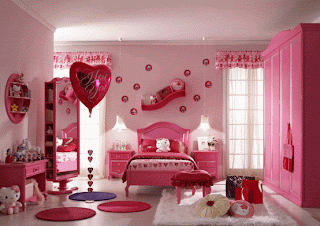
Using the overhead projector, that one-time staple of lecture halls, parents and kids can turn any traceable image into a mural. Simply project an easy-to-make transparency of an image onto the wall, trace it, then fill it in as though you're painting in a giant coloring book. The result is a professional-looking, inexpensive mural that can transform a blank wall into a truly unique focal point of a kid's room.
- Materials
-
- Overhead projector (you can borrow or rent one)
- Transparency film (available at office supply stores)
- Fine-tip markers
- Masking or painter's tape
- Paints (interior latex and artists' acrylics)
- Paintbrushes in various sizes for outlining, filling in, and detail wor
- Instructions
-
-
Choose an image. We suggest sticking to fairly simple, two-dimensional pictures or designs that don't rely on elaborate shading or perspective. And the fewer colors the better. If your child has trouble selecting a favorite, check out the clip art sources at left (Daphne Jensen found her image on a CD-ROM of clip art). Any image that can be traced or printed onto transparency film will work.
-
Location, location, location. Decide where you want the mural. Do you want to incorporate architectural details? For instance, you might paint a jungle animal "sitting" on a radiator.
-
Make the transparency. There are three ways to transfer an image to transparency film: use a fine-tip marker to trace the picture onto the film, photocopy the picture onto the film, or use an ink-jet or laser printer to print a computer image onto the film. Decide which will work best for your image, then purchase transparency film (boxes of 25 sheets start at $4) at an office supply store. Note that different types are sold for tracing, photocopying, and various printers.
-
Project your picture. Borrow an overhead projector from a school or church or rent one from a rental shop. Experiment with the distance you project from and the size of the image on the transparency to get the mural dimensions you want. (For the mural Daphne made, the baseball diamond on the transparency was 5 inches tall, and we set the projector 10 feet from the wall to enlarge it to almost 4 feet tall.) Use a pencil to trace the outline of the projected image (including any shaded parts) onto the wall.
-
Select your paint. Interior latex paint, which comes in quarts, is best if you're painting a few colors and filling in relatively large areas. For detail work, use artists' acrylics, available in tubes and bottles at craft and art supply stores. You'll also need appropriately sized paintbrushes.
-
Paint like a pro. For a more realistic effect, paint the background before the foreground. Step back from your mural regularly to see how it looks from the distance it will be viewed from.
-
- http://familyfun.go.com/

No comments:
Post a Comment